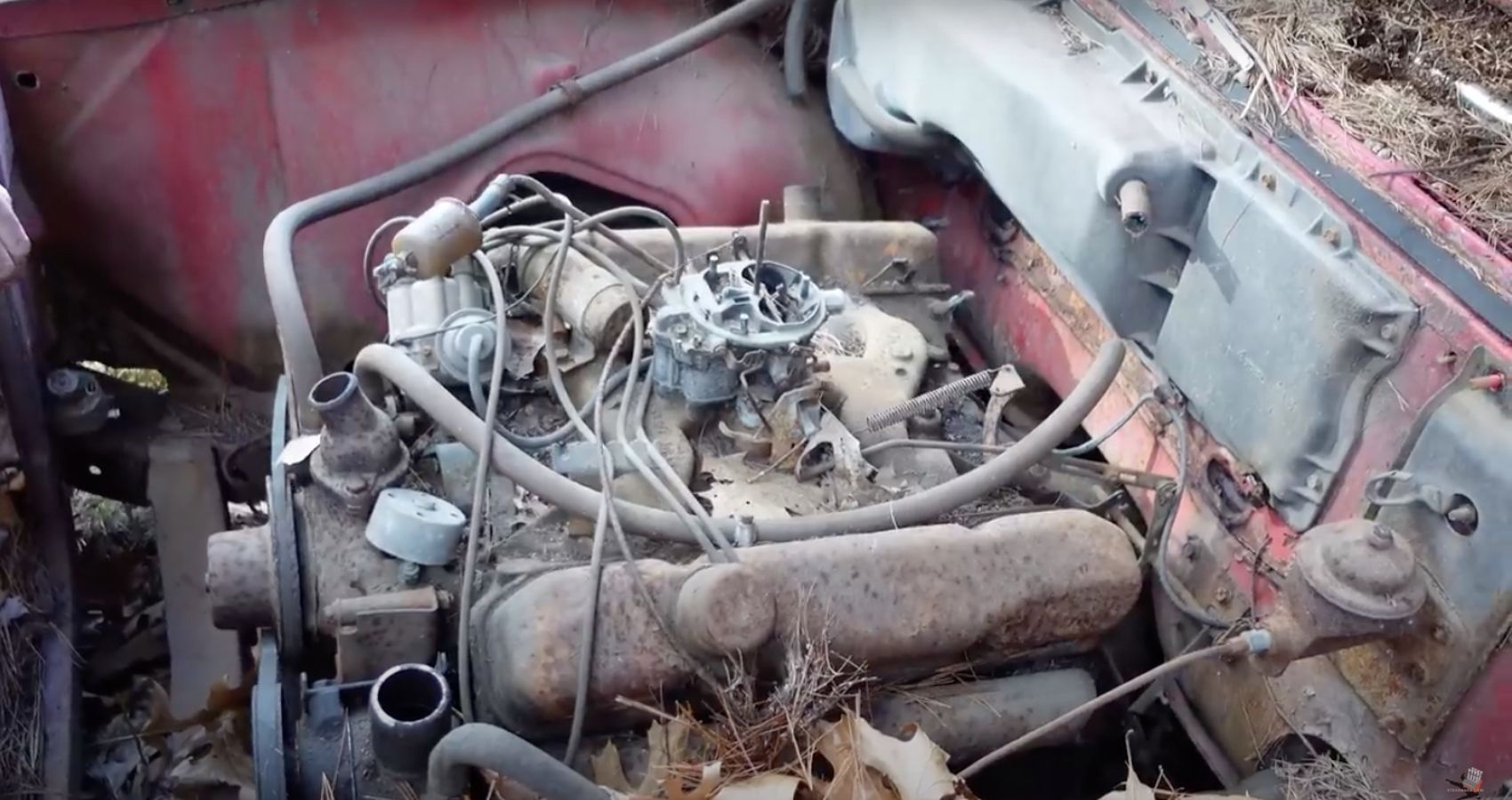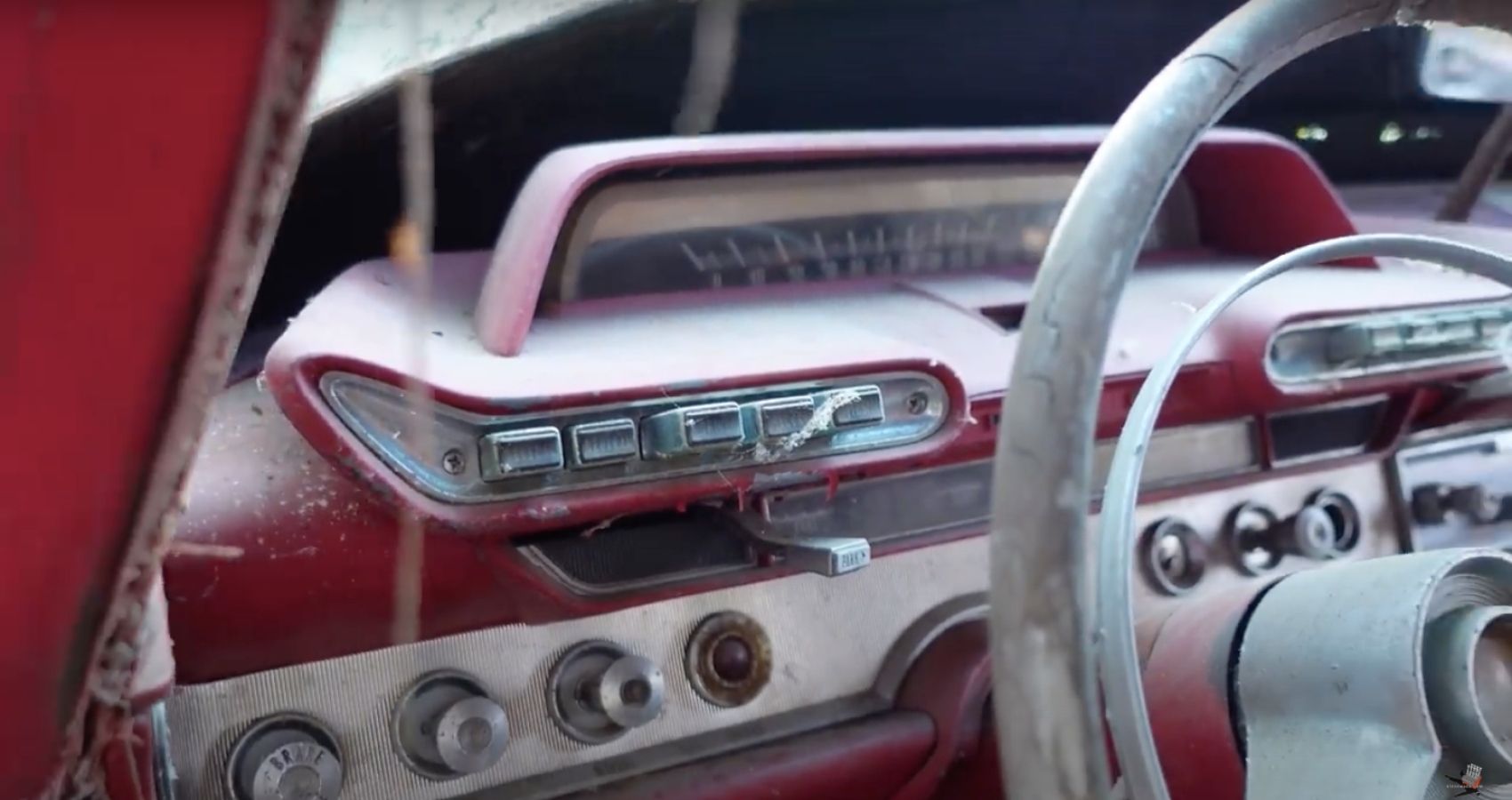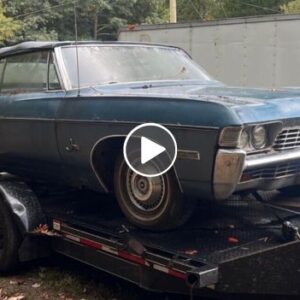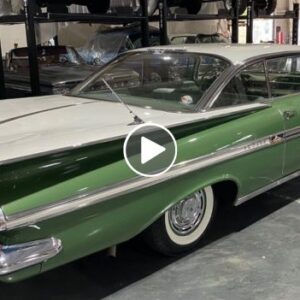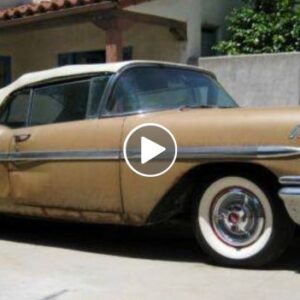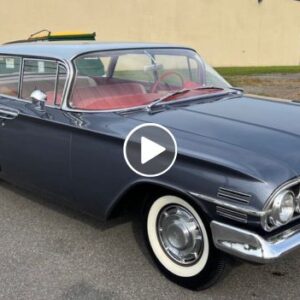A forgotten Dodge, this C-Body classic has more in common with the Dodge Challenger Banshee EV than you’d first think.
A classic car, this Dodge 880 Custom, gets an in-depth walk around from a true gearhead, TV star, and automotive legend Steve Magnante. In a junkyard, in rural Massachusets, this rusty classic Dodge sits unloved. An example from 1963 year. This early C-Body car, showcases the transition away from the traditional opulence of the 1950s, to the new designs of the 1960s that would lay the foundation for the rise of the American muscle car.
The Dodge Custom 880 seems a little forgotten in the Dodge lineup of the 1960s. Not with good reason but instead as the company frequently changed naming conventions. You’ll most likely know the Dodge Dart. However, the name moved between platforms. In 1961 the Dart nameplate found itself on the full-size C-Body. Before moving its way down the platforms each model year till it became the compact A-Body-based muscle car legend.
The largest of Dodge’s models on sale at the time, beneath the hood you will only find V8 big block engines. According to Magnante, Dodge built 28,266 Custom 880s. The example Magnante finds in this scrap yard though is a little more special. A two-door, hardtop coupe is the rarest specification. After all, when most want a large car they need it for practical reasons and favor the likes of sedans and wagons. As a result just shy of 3,000 Dodge 880s like this left Detroit.
However quite a common classic car, even the best-kept Custom 880s are relatively affordable. According to Classic, an aggregator of classic car prices, the Custom 880 sells for an average of $18,700. Convertibles and coupes command the highest price tag.
Visiting Burniston Auto Wreck Yard in Massachusetts, the model car builder and car fanatic introduces us to one of Dodge’s least well-known models. But by no means is the 880 Hardtop uninteresting. A custom model from 1963 the 880 comes from before the manufacturer’s gas-guzzling muscle cars like the Charger and Challenger. Magnante walks us through the development of Dodge’s platform-based models that moved the brand away from only producing full-size cars. The 880 uses the C-Body which would support the Dodge Monaco and Polara over the next decade.
This example seems a little past its best, with the elements removing the paint from the vehicle and perhaps some sort of crash that took the car off the road. However looking at things the grille and interior which appear to stand the test of time, show the quality and effort that went into these old cars. It seems hard to imagine a Dodge of today sitting like this in a recognizable condition in over 60 years’ time.
At the time of the 880’s production, Dodge’s chief designer Virgil Exner ushered in a new era of automotive design. The 880’s evolution looks like the perfect example of this. Take the long sweeping trunk. With the 880’s introduction, the car featured fins at the rear. However, by 1963, the designers cut these back, creating a sleeker profile. The design motifs of the 1960s slowly saw removal as Dodge under Chrysler’s ownership effectively played catchup with the competition at Ford and Chevrolet.
This Is How Much Options Cost On A Classic Custom Dodge
In this car, there’s the 361 V8, the base engine that found its way into the 880 with 265 horsepower. However, the car also featured the 383, 413, and 426 engines. All of these were paired with a 3-speed manual or Torqueflite automatic transmission, as normal for Dodge at the time. The Torqueflite transmission cost over $200. The 4-speed would feature in the following model year, 1964.
Poking around under the engine Magnante highlights the car’s power steering, a $77 option. That doesn’t sound like much but adjusted for inflation that’s a mighty $749.90 in 2022. Very few options on a Dodge of today cost that much. Yet back in the early 1960s power steering seemed like the height of luxury. With a total length of just under 5.5 meters, it’s hard to see how to consider driving this car without power steering, it just shows how far technology has come.
Marking the age of the car the 880 has single-circuit brakes. With the fluid running around all the brakes in one system, if basically, anything went wrong you’d very quickly be without your brakes, a far cry from today’s modern anti-lock brakes. A rather terrifying idea in such a big heavy car that weighs in approaching 4,000 lbs.
The construction of this C Platform car highlights classic Dodge’s design differences. Magnante refers to it as “semi-unitized”. Effectively the front of the car and the fenders bolt on the frame of the car. Everything in front of the firewall relies on some simple rivets to keep it attached to the car. It’s the same for the rear of the car and the trunk.
This Dodge Features The Fratzog Logo Of Dodge’s Challenger EV
On this Dodge Custom 880, there’s a rather interesting and pertinent feature. Proudly mounted on the hood features the Dodge Fratzog logo. Back in 2021, CNBC reported “Dodge will use a throwback logo called the “Fratzog” for its upcoming electrified vehicles”.
This is the circular three Vs that now features on Dodge’s EV Challenger Banshee. These V’s form a triangle, yet have curves. Designed under Virgil Exner, Dodge’s chief designer of the late 50s and early 60s. The emblem connoted a forward-looking Dodge in the space age era. Something the marque is keen to evoke once more as the industry moves into the EV era.
